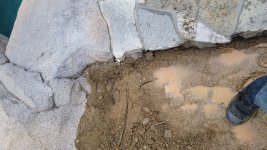- Aug 19, 2021
- 1,605
- Pool Size
- 17700
- Surface
- Plaster
- Chlorine
- Salt Water Generator
- SWG Type
- Pentair Intellichlor IC-40
For southern California, we had a biblical amount of rain yesterday which overflowed our pool. Pool level was already high from last weeks rain but yesterday's added at least 5" plus (level was even with top of coping so I don't know how much ran out overnight)
I last tested Friday and all was well but when I went out today the water color was off so I knew we had an issue. Ph this morning on my ph60 showed 9.01. It's never been that high since pool startup so as a backup I used the taylor test as well and it showed off the charts pink. The ch also dropped by at least 100ppm and salt dropped 200ppm from last test. The oddball was the cya which seems the same.
Before I go adding a ton of acid (83 ounces per pool math) I wanted to make sure these are normal impacts of rain ?
?
I last tested Friday and all was well but when I went out today the water color was off so I knew we had an issue. Ph this morning on my ph60 showed 9.01. It's never been that high since pool startup so as a backup I used the taylor test as well and it showed off the charts pink. The ch also dropped by at least 100ppm and salt dropped 200ppm from last test. The oddball was the cya which seems the same.
Before I go adding a ton of acid (83 ounces per pool math) I wanted to make sure these are normal impacts of rain




